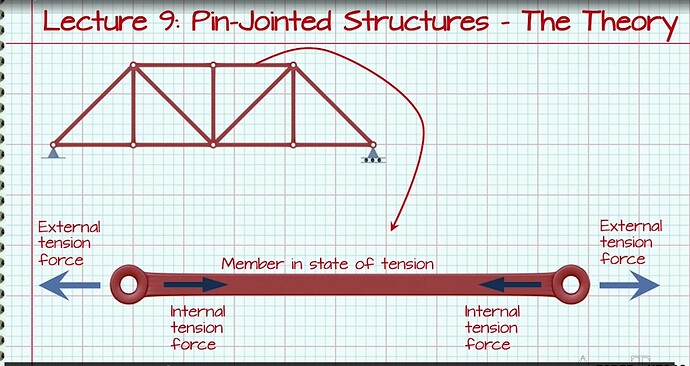Questions and discussion for this lecture live here. Fire away by hitting Reply below ![]()
Hello! I am wondering why is the cost of pin joint more expensive than the cost of welded joint? I learnt from my lectures that fix joint are usually more expensive to construct right?
Also, what do you meant by truss being more efficient than beam in carry large distance?
Generally speaking, welded joints on trusses are more straightforward to fabricate (there is just less fabrication involved) and as a results they are typically cheaper - again this refers specifically to trusses, which often have elements framing together at a range of different acute angles.
However, if you are fabricating a beam to column connection in a steel frame, for example (which is what I suspect your lecturer may have been referring to), then a pin connection will be cheaper than a fixed connection (which may be achieved by welding, although not always).
In terms of structural efficiency, a truss will have a larger strength to weight ratio than a beam that spans the same distance - as such it uses material more efficiently.
Hope that helps.
Seán
Hello Sean, I have a basic question for you ;
When there is external tension force on the member of truss, truss is reacting as internal compression force right? We have written here internal tension force. I guess it is a typo maybe, or i am missing something crucial here ?
Probably i am confused by global equlibrium and local equlibrium for forces such as external tension force applied on the node and compression reaction given by node. However, that is balanced by tension force in the member etc.
I am kinda confused here, sorry to bother you with such a fundamental question, but it looks like i am confused since a long time maybe.
Same question holds once there is external compression force, member shall act with internal tension force right?
Could you please have a look once you have a chance ?
Thanks a lot,
Burak
Hi @m.burakcakir33 - In the image we see an external tension force applied to the bar (arrows pointing outward). This induces an internal tension force within the bar (arrows pointing towards the centre of the bar) that resists (and balance) the externally applied force.
I think your confusion arises because you are interpreting the arrows shown on the bar as compression forces when in fact this is how we represent an internal tension force in opposition/resistance to an external tension force. For the avoidance of any doubt, there is no compression represented anywhere on the image.
Hope that helps clear things up.
Seán
